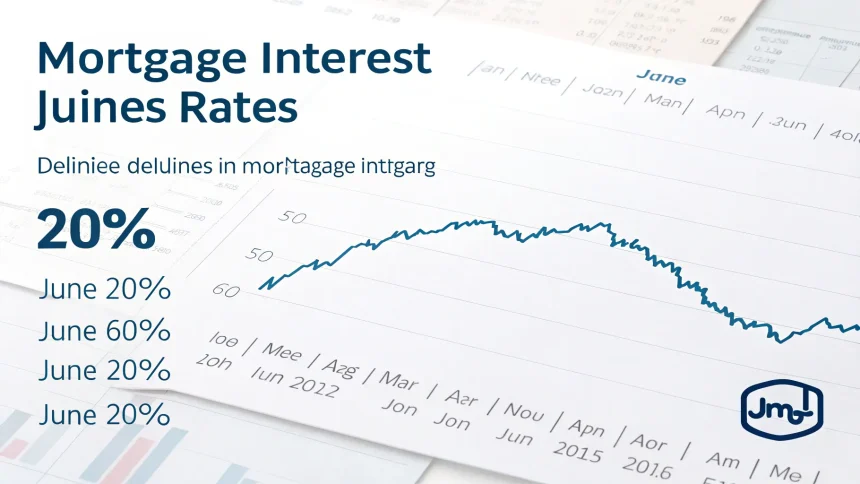Mortgage interest rates decreased marginally during the week ending June 26, offering a small reprieve for potential homebuyers and those looking to refinance existing loans.
This modest decline comes amid a housing market that has been characterized by high prices and fluctuating interest rates, making affordability a significant concern for many Americans seeking to purchase homes.
The slight downward movement in rates could signal a temporary easing in borrowing costs, though it remains to be seen whether this represents the beginning of a longer-term trend or merely a brief dip in an otherwise volatile market.
Market Impact and Consumer Implications
Even small changes in mortgage rates can have meaningful effects on monthly payments for borrowers. For a typical $400,000 home loan, a quarter-point decrease in interest rates can translate to savings of approximately $60-70 per month—adding up to hundreds of dollars annually.
Housing market analysts note that rate-sensitive buyers who have been waiting on the sidelines might view this dip as an opportunity to enter the market, potentially increasing demand in the short term.
Real estate professionals have observed that rate decreases, even modest ones, often trigger increased inquiry volumes from prospective buyers who had previously been deterred by higher borrowing costs.
Economic Context
The movement in mortgage rates typically reflects broader economic conditions and Federal Reserve policies. The slight decline occurs as financial markets continue to process inflation data and economic indicators that influence lending costs.
Mortgage rates, while influenced by the Federal Reserve’s benchmark rate, are directly tied to yields on 10-year Treasury bonds, which respond to various economic factors including inflation expectations, employment data, and overall economic growth projections.
Housing economists point out that even with this slight decrease, current mortgage rates remain significantly higher than the historic lows seen in 2020 and 2021, when rates dipped below 3% for many borrowers.
Looking Forward
Mortgage industry experts remain cautious about predicting future rate movements, noting that several factors could influence the direction of rates in coming weeks:
- Upcoming inflation reports
- Federal Reserve policy announcements
- Employment data
- Global economic developments
Homebuyers are being advised to consider their personal financial situations rather than trying to time the market perfectly, as rate predictions have proven notoriously difficult even for seasoned analysts.
Lenders report that despite the slight decrease, many borrowers are continuing to explore adjustable-rate mortgages and other alternative financing options as strategies to manage higher rate environments.
The housing market continues to face challenges beyond interest rates, including limited inventory in many regions and persistent affordability concerns that a small rate decrease alone cannot fully address.
As the summer home-buying season progresses, market watchers will be closely monitoring whether this slight decline in mortgage rates translates into increased transaction volume or merely provides modest relief to those already committed to purchasing.









